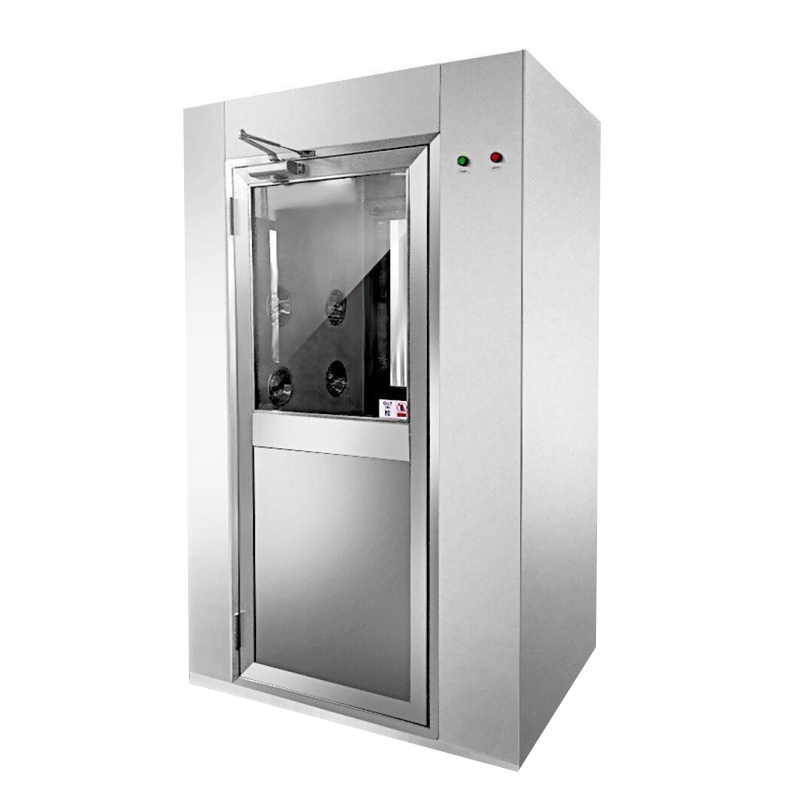

Designing an effective air shower requires careful cons […]
Designing an effective air shower requires careful consideration of several key factors to ensure that it meets the specific contamination control needs of a controlled environment, such as a cleanroom. Here are the key design considerations for air showers:
Airflow Pattern: The airflow pattern within the air shower is critical for effective particle removal. The design should incorporate high-velocity, filtered air streams directed at personnel or objects from multiple angles to dislodge and remove contaminants. Common airflow patterns include horizontal and vertical flows.
Number and Location of Nozzles: Determine the optimal number and location of air nozzles or jets within the air shower chamber. Proper nozzle placement ensures even coverage and effective decontamination.
Airflow Velocity: The airflow velocity within the air shower should be carefully calculated to provide sufficient force to remove particles without causing discomfort or turbulence for personnel. Typical velocities range from 20 to 30 meters per second (m/s) or 4,000 to 6,000 feet per minute (fpm).
Entry and Exit Arrangements: Design the entry and exit arrangements to minimize the risk of cross-contamination. Typically, a cleanroom will have two air showers in sequence, with an entry air shower to remove external contaminants and an exit air shower to remove any particles picked up inside the cleanroom.
Air Filtration System: Choose a high-efficiency particulate air (HEPA) or ultra-low penetration air (ULPA) filtration system to ensure that the air used in the shower is free of particles. The filtration system should be regularly maintained and validated for performance.

Control System: Implement an easy-to-use control system that allows users to initiate air shower cycles, adjust cycle duration, and monitor the status of the air shower. Some systems may include occupancy sensors to automatically start the cycle when someone enters.
Material Selection: Select materials for the construction of the air shower chamber that are compatible with cleanroom requirements. Materials should be easy to clean, corrosion-resistant, and non-particle shedding.
Size and Configuration: Determine the appropriate size and configuration of the air shower based on the number of personnel or objects passing through and the available space. Considerations such as the width, depth, and height of the chamber are essential.
Accessibility: Ensure that the air shower is accessible to personnel with disabilities and that it complies with relevant accessibility standards.
Energy Efficiency: Incorporate energy-efficient features, such as variable-speed fans, LED lighting, and motion sensors, to reduce energy consumption without compromising decontamination effectiveness.
Noise Levels: Minimize noise levels within the air shower to provide a comfortable environment for users.
Validation and Testing: Regularly validate and test the performance of the air shower to ensure it meets contamination control standards and specifications. This may include particle counting, airflow velocity measurement, and filter integrity testing.
Safety Features: Incorporate safety features, such as emergency stop buttons, safety interlocks, and alarms, to protect users in case of emergencies or malfunctions.
Compliance with Standards: Ensure that the design and construction of the air shower comply with industry-specific standards and regulatory requirements related to cleanroom equipment and contamination control.
Maintenance Accessibility: Design the air shower to facilitate maintenance and servicing, including easy access to filters and mechanical components.
Customization: Depending on the specific requirements of the controlled environment, consider customizing the air shower to accommodate unique needs or challenges.
Effective design of an air shower involves collaboration between engineers, cleanroom designers, and facility managers to ensure that the system meets contamination control goals and operates efficiently within the cleanroom environment. Regular maintenance and validation are also essential to uphold performance over time.
Our new models offer superb design;competitive prices and their new features give them distinct advantages over similar products from other manufacturers.